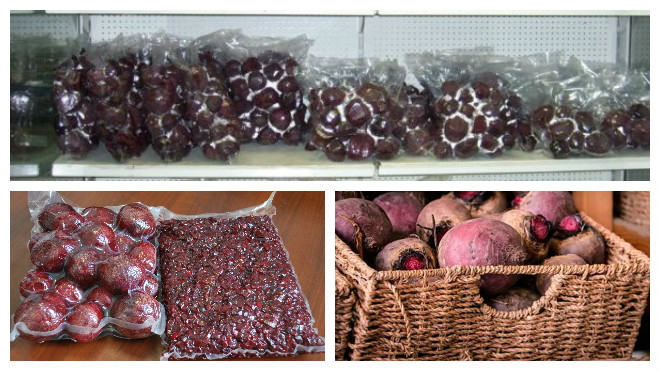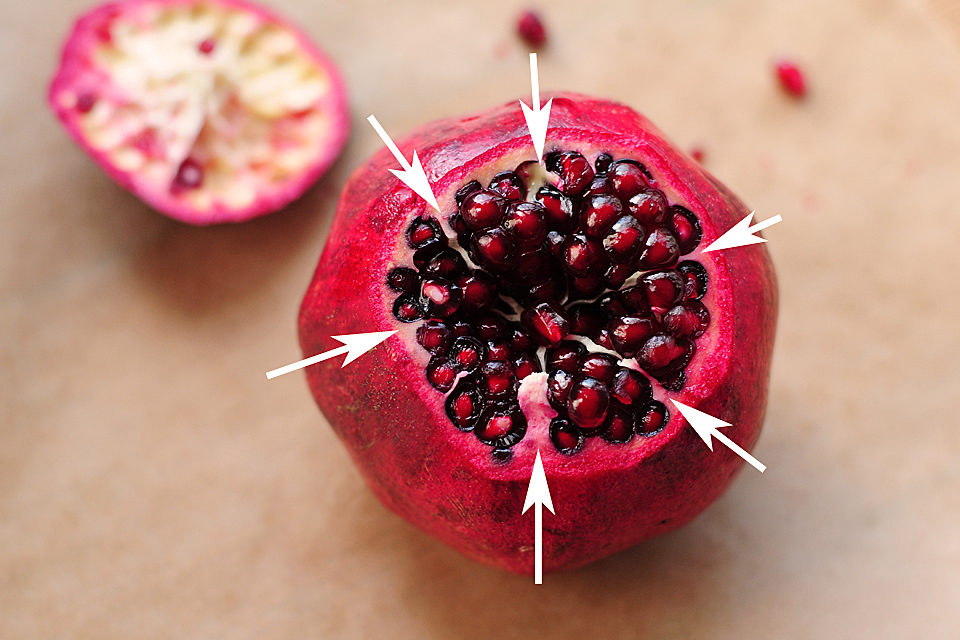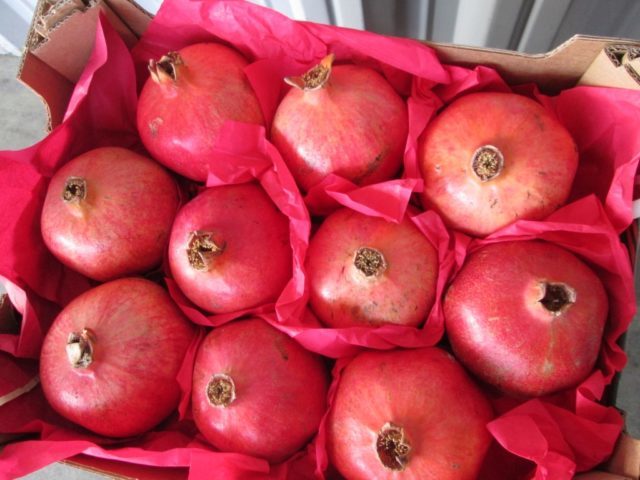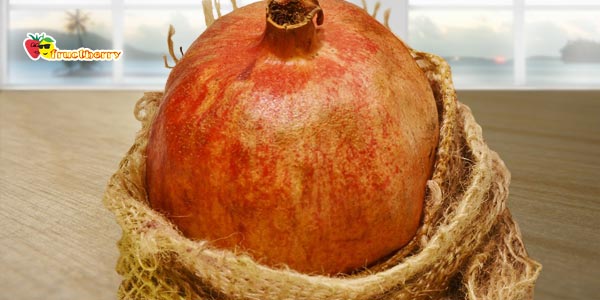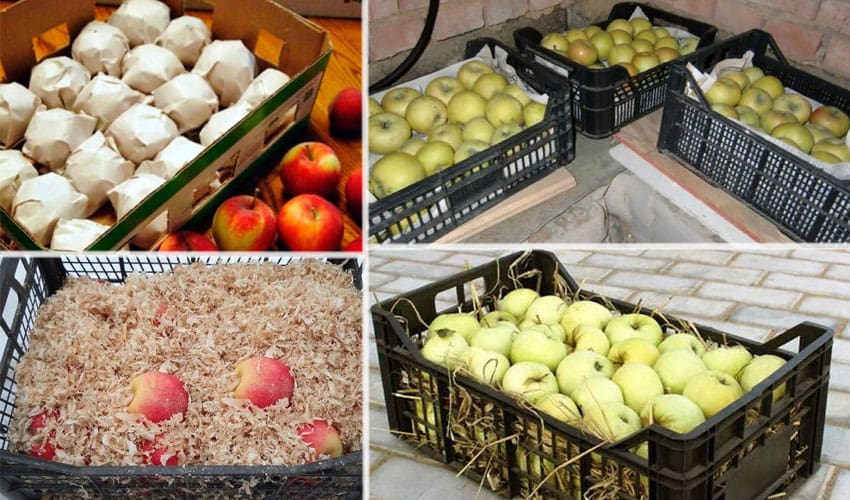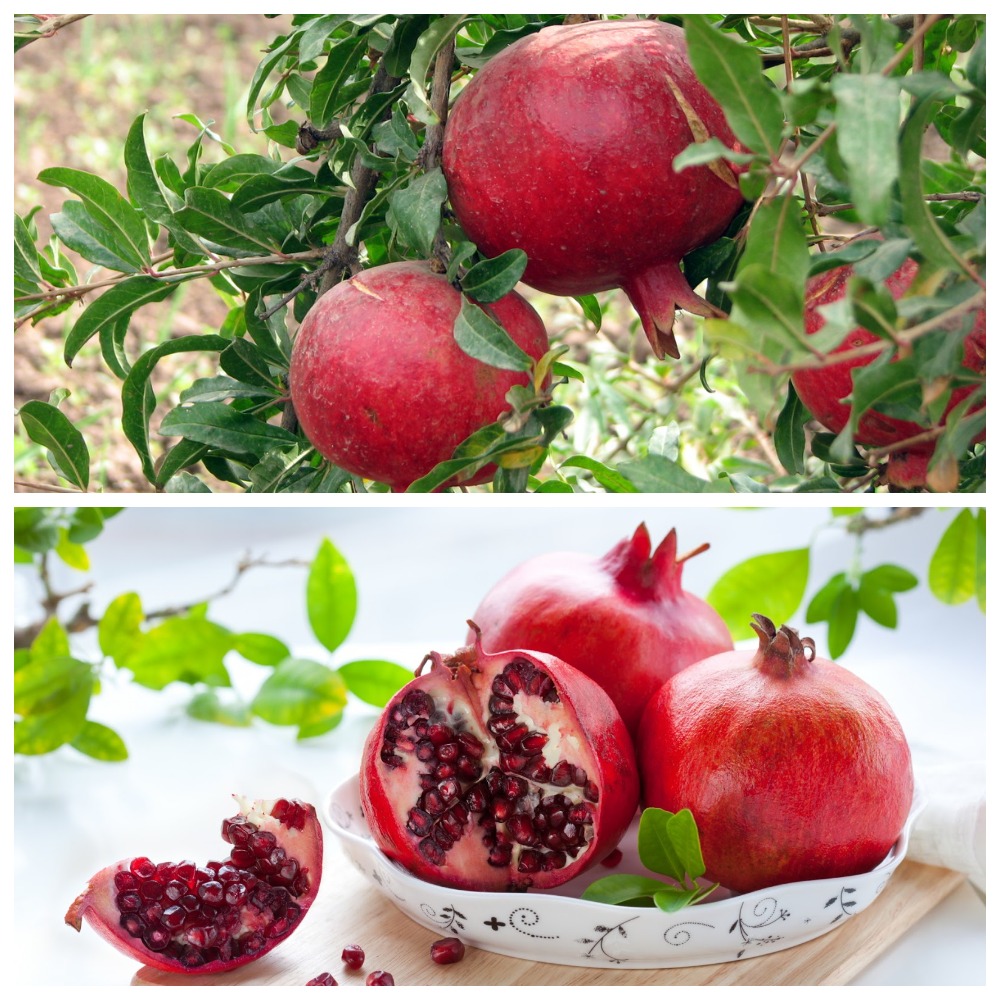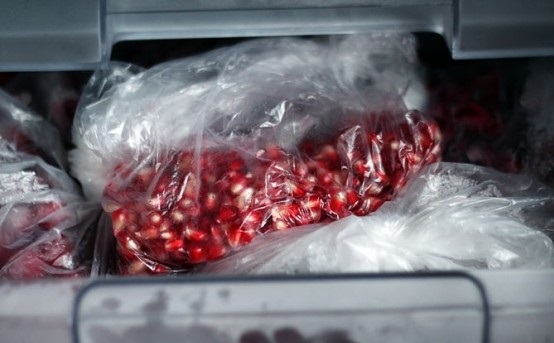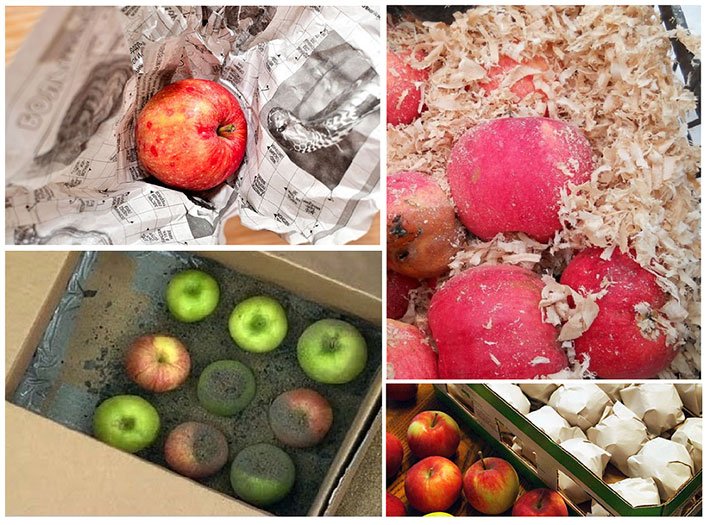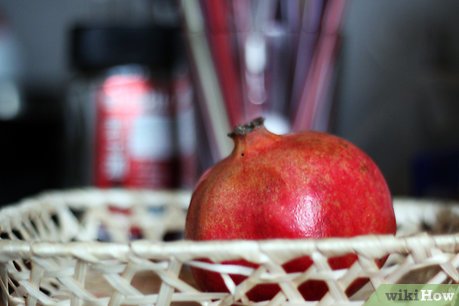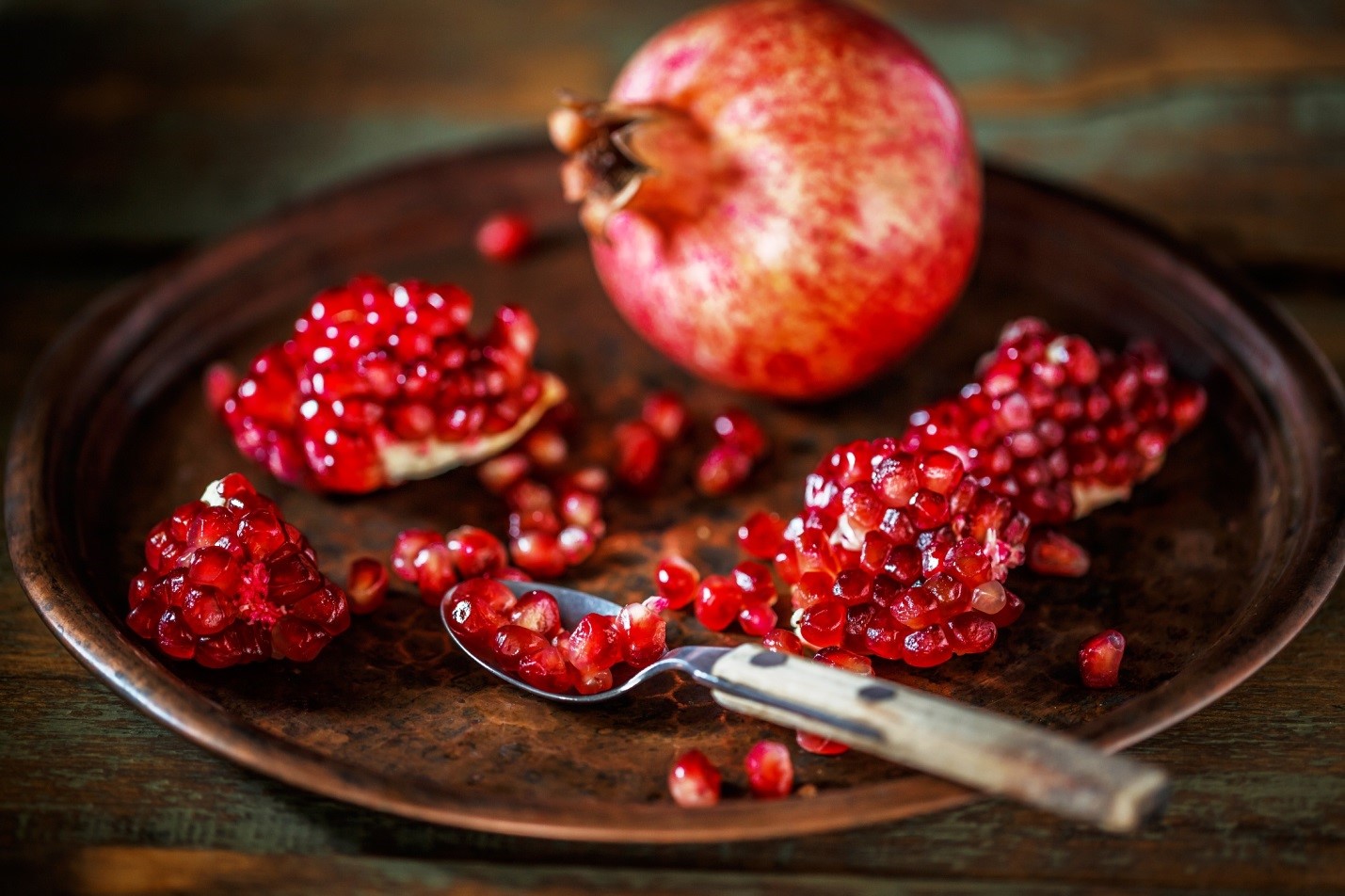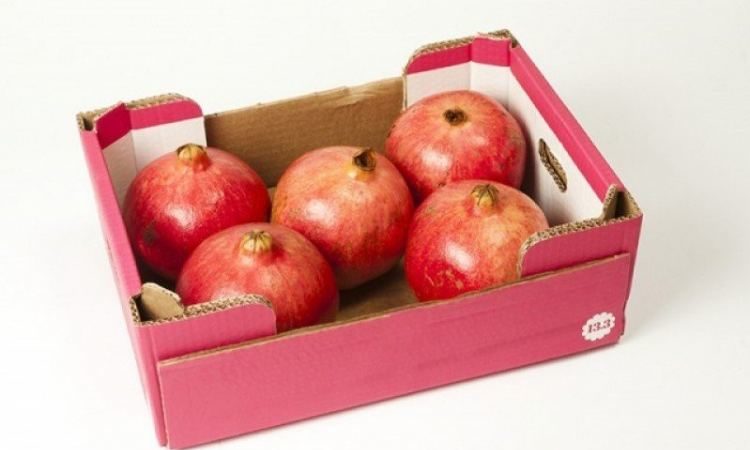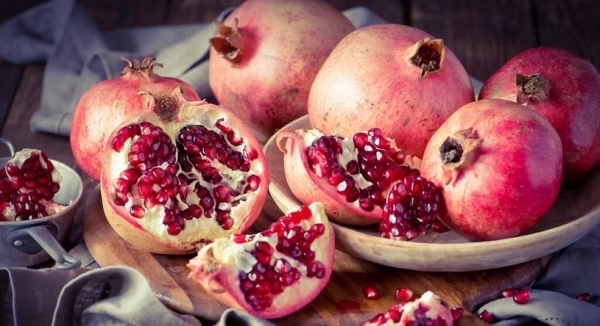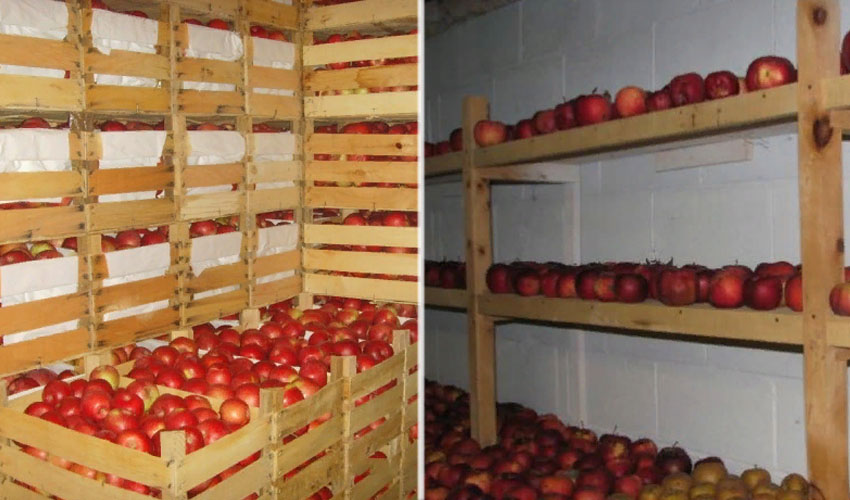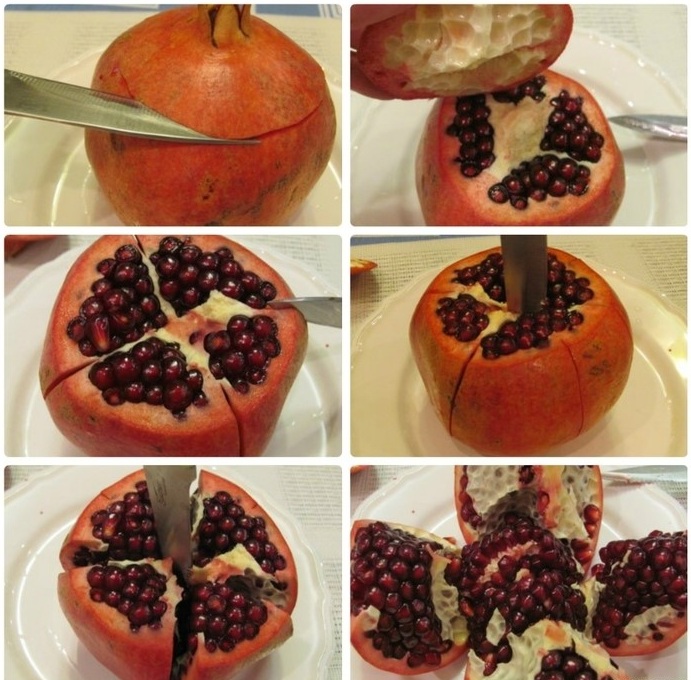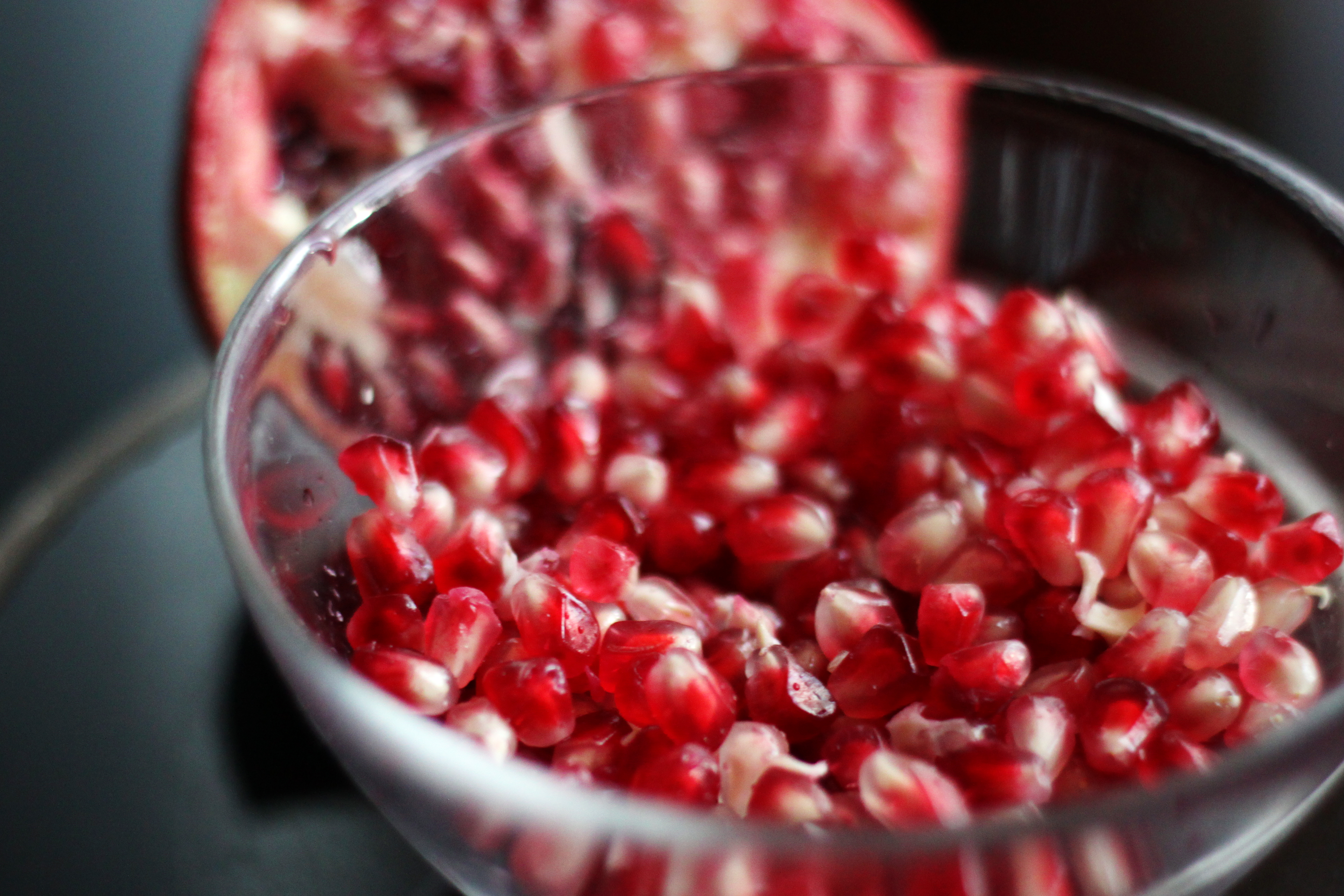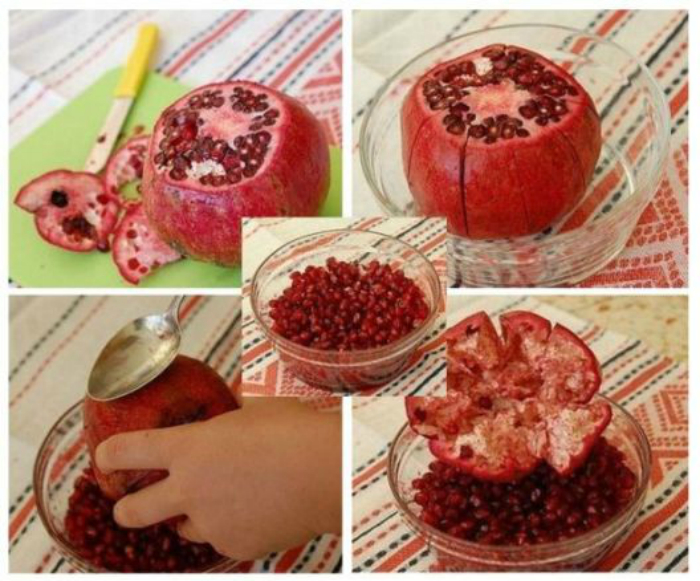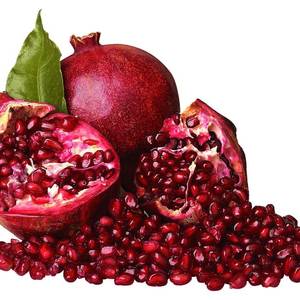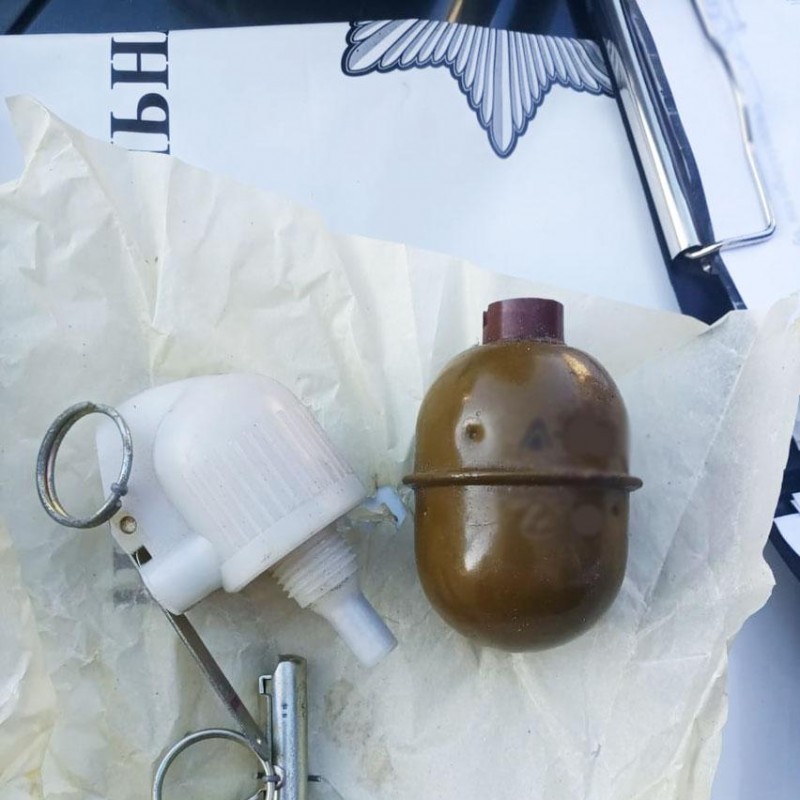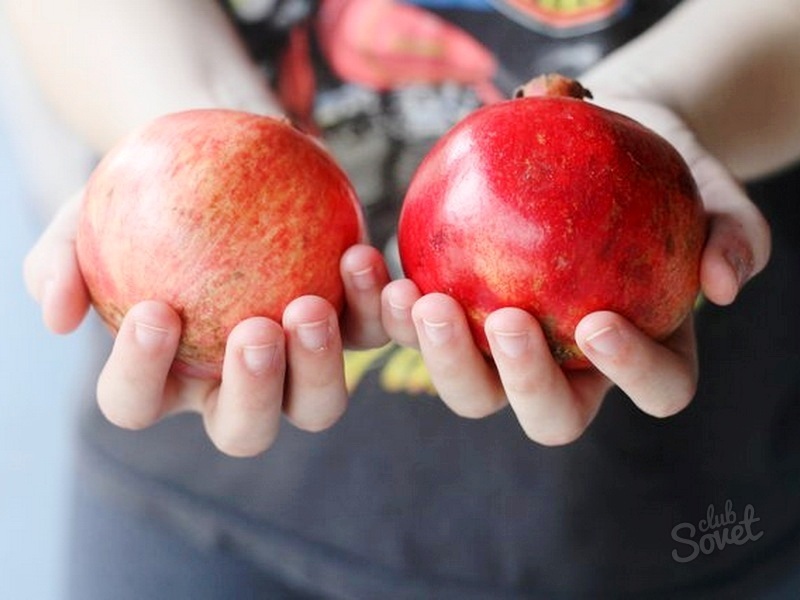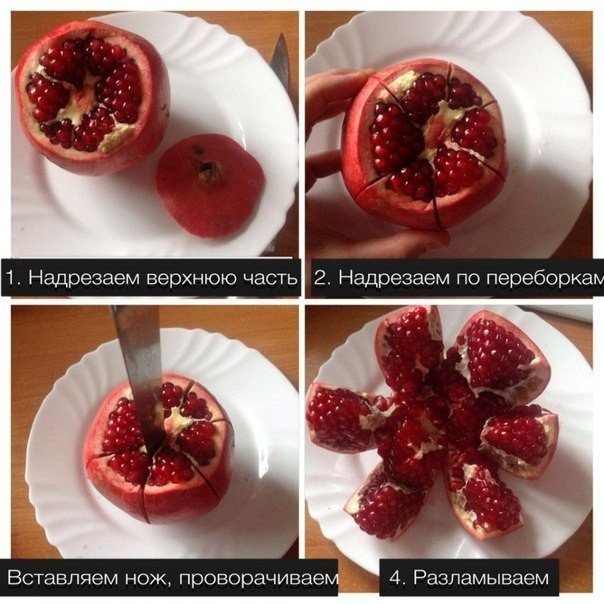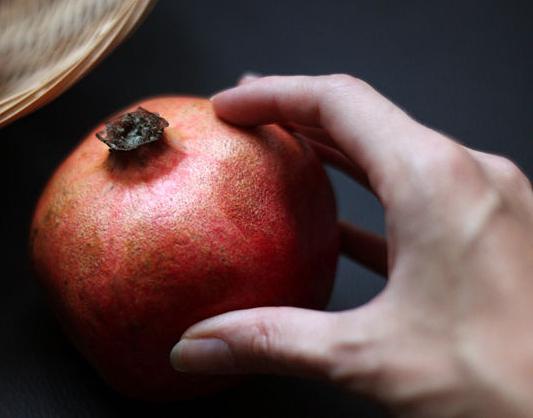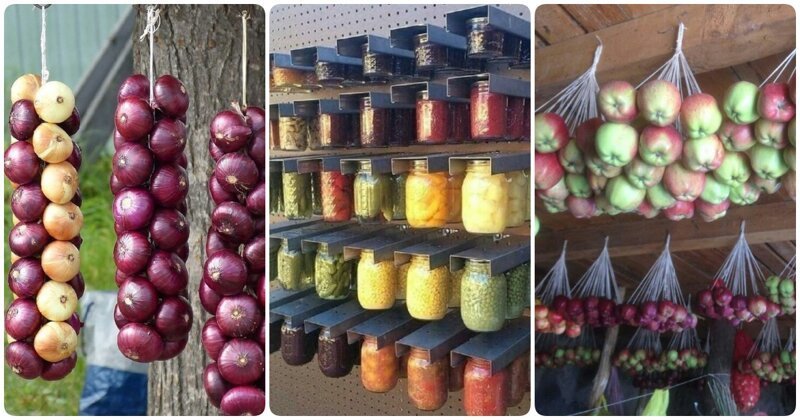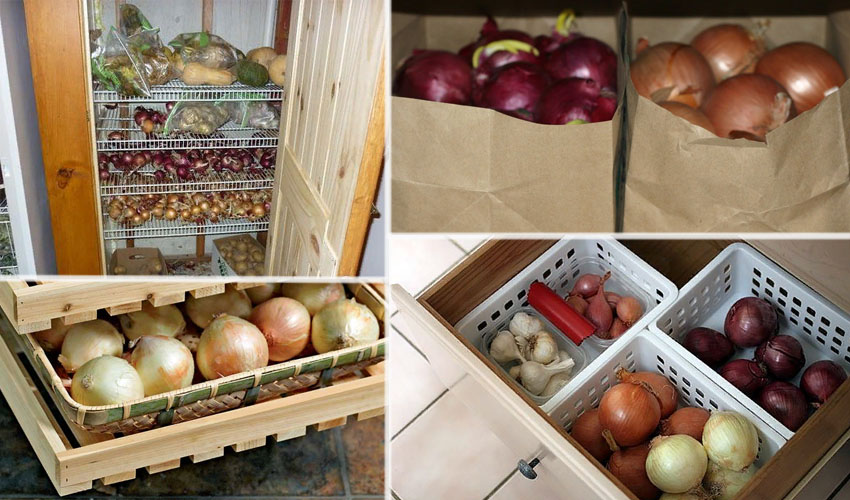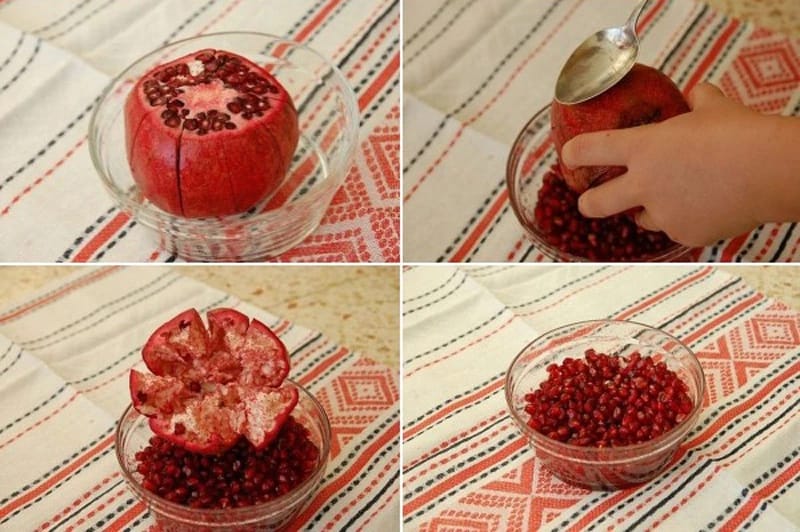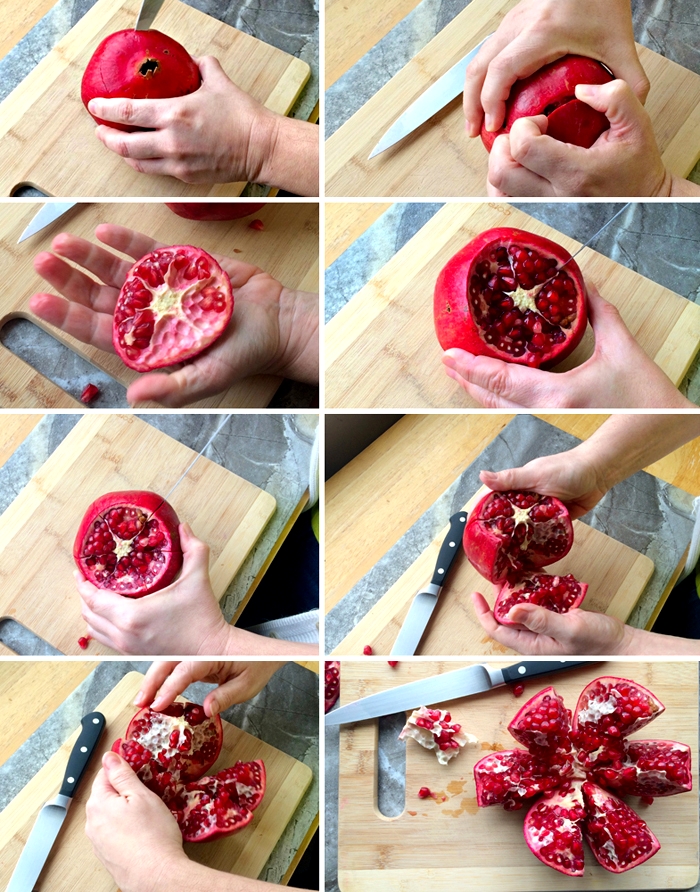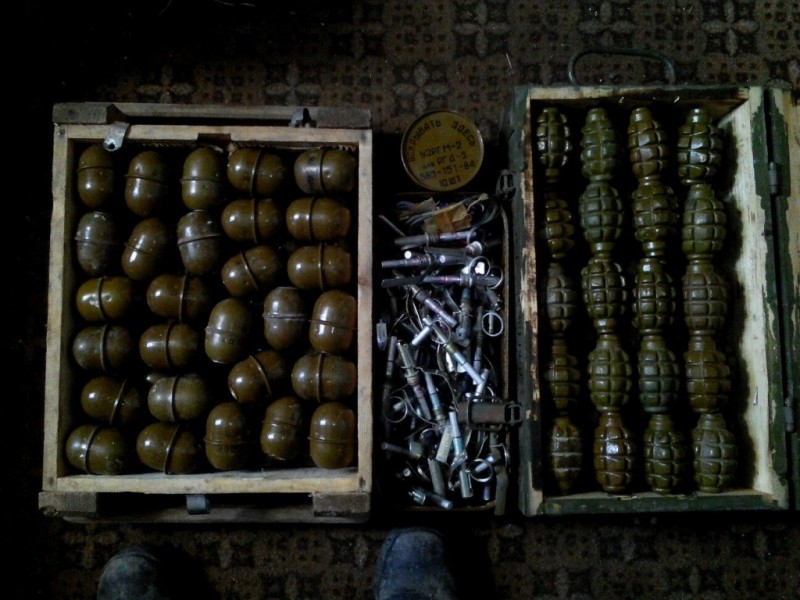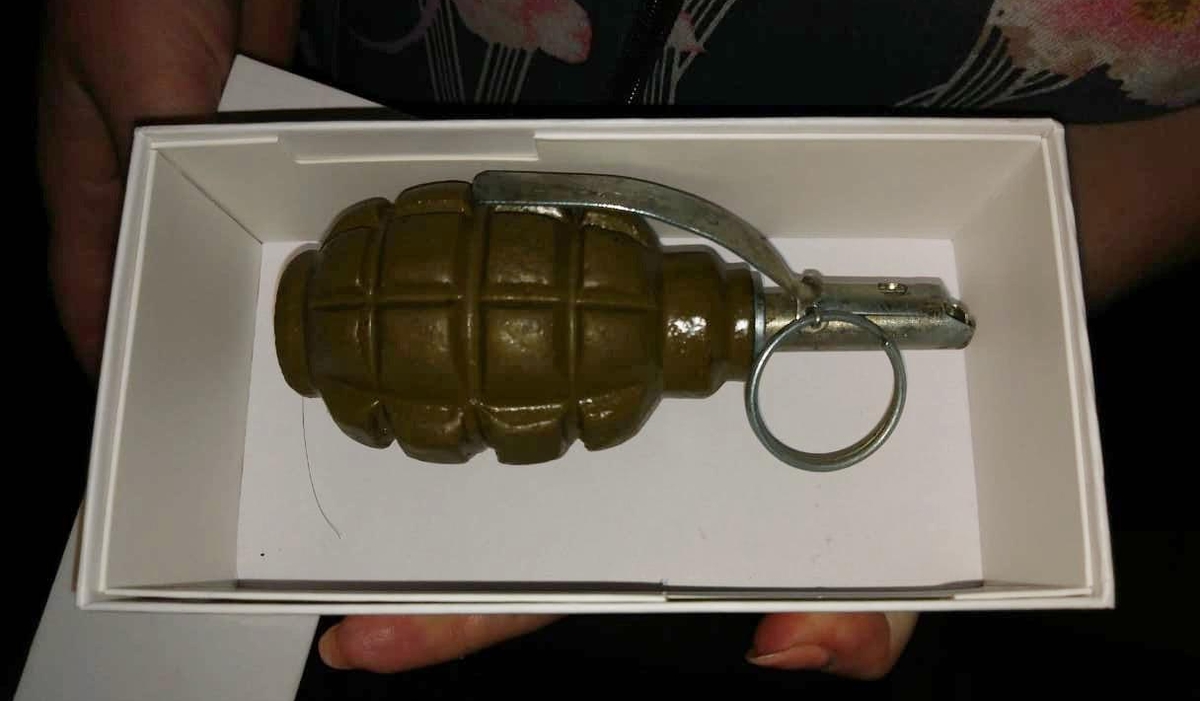How to store pomegranates in an apartment
There are several methods on how to preserve healthy southern fruits for 3-5 months at home.
How to store pomegranate in the refrigerator
At home, it is more convenient to put pomegranates in the refrigerator in the lower compartments for vegetables and fruits. To protect the fruits from accidental compression or impact, they are placed in a container with hard walls. Eliminate the use of plastic bags. Condensation forms on their airtight walls, which can trigger the onset of decay processes. When pomegranates are stored in the refrigerator, monitor its filling and adhere to the recommendations of the manufacturer of household appliances for use, so as not to increase the humidity. Otherwise, the fruits deteriorate faster.
As a precaution, each pomegranate is wrapped in clean wrapping paper or laid out in sheets. Excess moisture will be absorbed by the porous material
It may be necessary to change the wrappers during long-term storage. The use of parchment paper is allowed. The optimal storage period for unpeeled whole-skinned pomegranates in a home refrigerator is 50-70 days.
How to store pomegranates in the freezer
A slightly spoiled fruit from those purchased or from those that are put for long-term storage can be safely stored in the freezer. The flavoring properties will change slightly, but in general enough nutrients will be preserved. At home, it is advisable to use cameras with a quick freeze function. Pomegranates are prepared for freezing as follows:
- peeled;
- grains are selected from slices;
- put in portioned bags made of durable polyethylene or ready-made food containers of small volume.
Manufacturers of household freezers recommend keeping fruits under similar storage conditions for no more than a year.
How to store pomegranate fruits at home
A cool place with moderate humidity, 75-80%, is suitable for keeping fruits from 2-2.5 months at a temperature of 7-10 ° C to 5-9 months at + 1 ° C. At room temperature, pomegranates are poorly stored, after a week it dries up, since the humidity in the apartment is low. The supply of fruit is placed in a cellar or a closed balcony, if the thermometer does not drop below zero there. Each pomegranate is wrapped in paper and laid out on the bottom of the container in one layer. On top, you can throw a light but dense burlap or cardboard if the fruits lie in a bright room. The sun's rays, falling on the peel, will dry out the grains, and the juiciness will decrease. It is recommended to regularly check and sort out the fruits in order to notice in time those that are beginning to deteriorate.
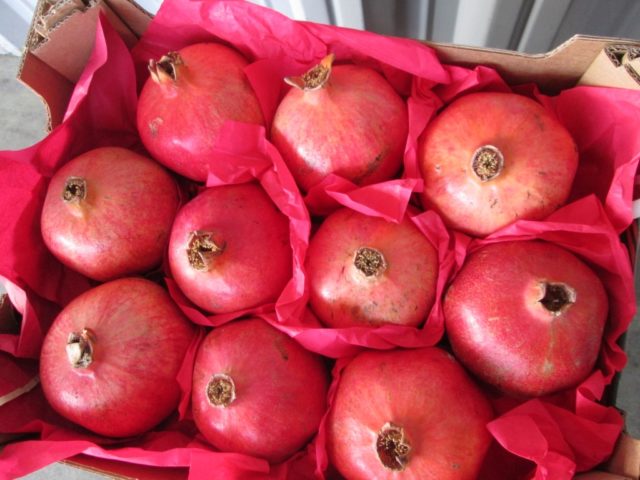
Storing pomegranates in a clay shell
There is an interesting folk experience on how to preserve southern fruits for a longer time in living quarters. Only whole fruits are selected, without cracks and damage on the crust, with a dry brown crown. A creamy chatter is prepared from clay and water:
- dipping pomegranate in clay;
- spread on a cloth or wooden surface until the clay dries;
- after a day, the procedure is repeated, making sure that the entire peel is covered with a clay shell, and the fruit is dried again;
- while pouring the mixture into the crown formed by sepals.
Pomegranates packed in clay retain their taste for up to 5 months. Store fruit in a box in a dry place.
Ways to store a whole pomegranate
The recommended lying temperature is from +1 to +10 degrees, so that they can be placed in a refrigerator, on a balcony or loggia, pantry, cellar. An important aspect is the humidity indicator, which should be in the range of 60-70%. Smaller values will dry quickly, while larger ones will rot.
Most often, fruits are used for storing:
The lower "vegetable" section of the refrigerator, which must first be thoroughly rinsed with soda and dried. Further, the bottom is lined with ordinary landscape sheets or parchment for baking, which is necessary to absorb excess moisture released from the fruit. It is also recommended to put each pomegranate in a paper basket, and then lay it out in rows in a prepared box. It is not recommended to do more than two layers, as this can lead to deformation and damage. From above, the layers are covered with a sheet of paper and in this form they can be stored for 2-3 months.
An insulated balcony or basement, which is an ideal solution if there is not enough space in the refrigerator. To do this, the bottom of ordinary boxes must be covered with cardboard, natural fabric or paper, and the fruits themselves must be wrapped in thin paper and laid out in rows. The top of the box is covered with a dense natural fabric. This method ensures safety for two months.
Any dry room with room temperature, but in this case it is necessary to make a clay shell. To do this, you need to take white clay and pre-fry it in the oven to neutralize bacteria, and then dilute with purified water to the consistency of rare sour cream. Each fruit is dipped in clay, and then placed on paper to dry, and after about 20 hours, the procedure is repeated
It is important to ensure that the “crown” is covered with clay. After the clay has dried, the crop can be folded into a box and rearranged to any convenient place.

It is not recommended to freeze whole fruits, as they will take up too much space, and the freezing process itself will take a long time. In addition, there is a high risk that the grains will simply burst during freezing, since they are filled with liquid, which expands at sub-zero temperatures.
How to store pomegranate properly
Before setting aside the fruit for storage, you need to carefully examine it. Even the smallest speck can subsequently be the cause of rotting not only of one pomegranate, but also of all those nearby with it. Therefore, every 2-3 weeks you need to check if there is any spoiled fruit among the rest. It is a great success to reveal the rotten fruit in time. So you can save everyone else from damage.
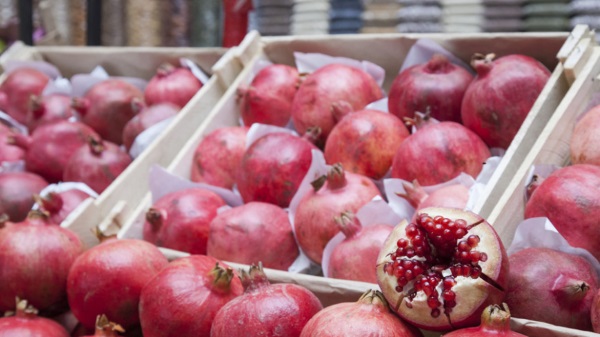
All grenades must be reviewed every 2 weeks
How to store pomegranate fruits at home
Ripe fruits can be stored quite well if all the necessary rules are followed. At home, it is better to keep them in the cellar. In this case, it is necessary to ensure regular ventilation, other conditions:
- store pomegranates at a temperature slightly above zero (1-2 degrees) and air humidity 85-90%, depending on the variety - from 1-6 months;
- at a temperature of 0 degrees and a humidity of 80% -85% - up to 7 months;
- if the temperature involuntarily falls below zero, the fruits are damaged.
For winter storage, it is best to select medium-sized fruits. If you want to prepare large grenades, you need to save them separately.
How to store pomegranate in the refrigerator
In the refrigerator, the pomegranates are best placed in the fruit storage compartment. Care must be taken to ensure that the temperature always remains at the specified level. Stably low rates will protect pomegranate fruits from the development of spoilage and decay processes in them.

It is better to freeze pomegranates using the nofrost system
Rules for storing pomegranates in the freezer
Scientists have found that deep freezing allows you to fully preserve the nutritional properties of products. Even the "capricious" vitamin C does not suffer from such a procedure. If freezing is carried out at a temperature slightly below zero, then the water contained in the pulp crystallizes, and after defrosting it flows out and many nutrients are lost with it.
When the -18 degrees mode is used in the freezer, the process is different. Very small crystals are formed, which retain their original properties.When properly defrosted, such foods do not lose anything in their nutritional composition. Freeze fruits at home in small portions. This will freeze faster and deeper.
It is best to use rectangular containers for freezing. Fruit must be taken well-ripened, of high quality. If plastic bags are used, they need to be shaped like a bar. When filling them, you need to make sure that there is a little free space, since the frozen fruit mass, as a rule, increases in volume.
Defrosting is best done on the upper shelves of the refrigerator. That is, you will have to spend a lot of time on this. Therefore, you need to be patient and follow the defrosting procedure according to all the rules. By speeding up this process, you can not only lose the nutritional and taste properties of the product, but also cause its rapid deterioration. It is strongly not recommended to re-freeze the fruit mass.
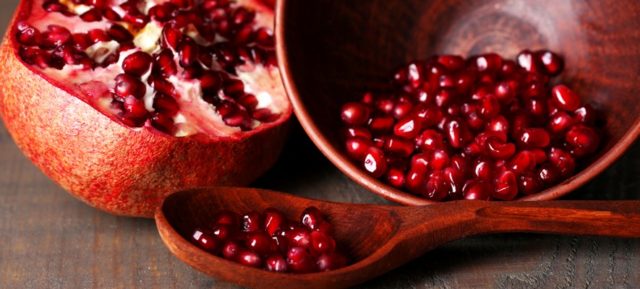
Before freezing, peel the pomegranate and select the grains.
How to store pomegranates in a clay shell
There is a rather unusual way of storing oriental fruits that has come down to us from time immemorial from our ancestors. As you know, there were no refrigerators and freezers at that time. Therefore, they came up with various ways to preserve the harvest until winter and longer.
Dilute the clay to a creamy consistency. Pour the resulting solution into the place on top of the fruit, called the "crown". Wait until everything is dry, and only then send it for storage. This method will help to reduce the loss of moisture from the fruit, it will be able to remain fresh and juicy for a long time.
Choice
For long-term storage, pomegranates are selected of high quality, without damage. How ripe the fruit is can be seen from the peel. The more ripe the fruit, the juicier its inner filling, and externally it is distinguished by a dried thin peel.
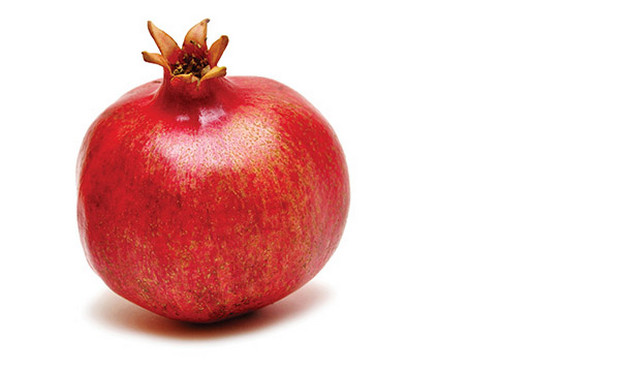 The moisture and elasticity of the skin speaks of an unripe plucked fruit that has ripened artificially. The peel of pomegranates comes in a variety of colors. There are not only the usual red fruits, but also brown, light green and yellow. The color of healthy ripe fruits is uniform and uniform, the peel is slightly shiny and resembles the thin bark of a woody plant.
The moisture and elasticity of the skin speaks of an unripe plucked fruit that has ripened artificially. The peel of pomegranates comes in a variety of colors. There are not only the usual red fruits, but also brown, light green and yellow. The color of healthy ripe fruits is uniform and uniform, the peel is slightly shiny and resembles the thin bark of a woody plant.
If the pomegranate has brown and brown spots, it is a product spoiled by black rot. Ripe fruits are selected by the caps on the tops of the fruits. It should be dry and open. Unripe fruits have green crowns. Ripe fruits have a delicious pulp surrounding the grains. Not too ripe pomegranates are also good, only they need to lie down a little.
A good quality fruit should be large in size with a diameter of about 10 centimeters. One ripe pomegranate weighs half a kilo, ripe grains are filled with juice. Damage, brown spots and scratches must be free. If a ripe pomegranate is squeezed, it crunches, and if you tap it, you can hear a "metallic" sound. November will be the best time to buy an exotic treat. At this time, the fruits are delivered from neighboring countries. The delivery path is short, so there will be less damage.
How to choose a pomegranate for storage
If you pay due attention to this stage, moderately ripe fruits will lie at home for about 10-12 months. At the same time, you can easily transport grenades without being afraid to be smart about them.
In the selection process, you need to pay attention to weight and size
The diameter of the fruit should be at least 8 cm. It is advisable to give preference to pomegranates from 10 cm.
As for the weight category, a good garnet has a high density (no voids). Buy fruits weighing from 450 gr. and higher. This indicator is a consequence of full ripeness, the grains are filled with juice.
A good pomegranate has a thin red skin with orange splashes (not always). The matte shell must be dry and firm. Pomegranates that are too pale are not suitable for storage.
Inspect selected specimens for brown spots, cracks, or other damage. Feel the pomegranate; it should crunch a little when pressed.
To gauge ripeness, tap the shell with your finger. If you hear the sound of metal, the fruits are moderately ripe (not overripe), you can buy them for long-term storage.
The best time to buy a crop is mid to late November. At this time, foreign fruits are delivered to the shelves. Evaluate the "crown" if it is dry, ripe and high-quality fruit.
How to store a whole pomegranate
After buying ripe fruits, you should think about their further storage. Where to store pomegranates so that they do not deteriorate? The correct choice of method will preserve most of the useful properties. Keep pomegranates at room temperature in the refrigerator or freezer.
Room conditions
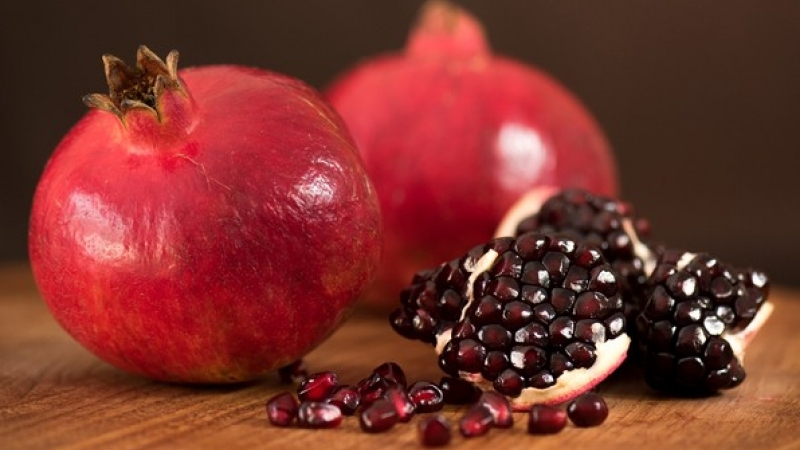
To keep the pomegranate at home, the following conditions are met:
- room temperature + 18 ... + 24 ° C;
- humidity level 60%;
- a dark place where direct sunlight does not fall;
- paper craft bag, it is not recommended to store fruits in plastic;
- shelf life: no more than 7 days.
Fridge
What is the best way to keep a pomegranate at home? A refrigerator is the best option.
Temperature conditions affect shelf life:
- at a temperature of + 4 ... + 6 ° C, pomegranate is suitable for consumption for several months;
- at a temperature of about + 1 ° C, the period increases to 9 months;
They do not store fruits in plastic bags, use paper ones - the fruits will not dry in them.
A compartment for storing fruits and vegetables is best in the refrigerator, since temperature drops at this level are minimal.
Balcony or cellar
In the cold season, the fruits are placed in a cellar or on a glazed balcony.
For both options, the storage rates are the same:
- temperature about + 5 ° C;
- each fruit is individually wrapped in paper;
- wrapped copies are laid out in one layer on the bottom of a cardboard box with holes for ventilation or a wooden box;
- to avoid direct sunlight, cover the pomegranates with a sheet of cardboard or loose fabric;
- shelf life: about five months.
To reduce the evaporation of moisture from the fruit, the tail of the fruit is poured with clay mixed with water, after which the mixture is allowed to dry on the top and the berry is placed in a dark and cool place.
Freezer
For longer storage, deep freezing is used, however, in the freezer after a while, the fruit loses some of its beneficial properties. Pomegranates can be frozen whole or as seeds. In both cases, the shelf life reaches one year.
Freezing whole fruit
To freeze the whole fruit, observe the following rules:
- temperature –18 ° C;
- choose fresh, dense fruits without signs of mold and rotting;
- fruits are placed in plastic containers and tightly covered with lids;
- place containers with the product in the freezer, observing the commercial proximity (not placed near meat and fish products).
Freezing grains
Freezing rules:
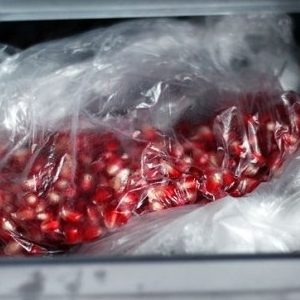
- temperature –18 ° C;
- choose fresh, dense fruits without signs of mold and rotting;
- do not wash the pomegranate kernels before freezing;
- lay out the kernels in portioned packages in order to defrost not the whole mass, but the required amount;
- place the container with the product in the freezer, observing the commodity neighborhood;
- avoid re-freezing the product.
How much pomegranate is stored
To prevent pomegranates from spoiling, they must be stored at a temperature of 1 ... 10 ° C and moderate humidity. If the latter is high, then the fruit will quickly rot, and if it is low, it will dry out. For storage, a basement or cellar, a refrigerator are suitable.
In the apartment

At room temperature 18 ... 24 ° C, in relative warmth, it will not work to keep pomegranates for a long time, maximum 7 - 10 days. Then they will begin to dry.
In fridge
In the absence of high humidity, pomegranates should be stored in the vegetable compartment of the refrigerator.In a cool dry place, the fruit will lie for 1 - 2 months.
At the same time, each fruit must be wrapped loosely with clean paper (not newspaper) or parchment. And once a week, inspect the fruit, removing the spoiled ones, and change the wet paper to a new one.
In such a storage, the temperature should also not rise above 10 ° C.
Option 1. In boxes
Wrap the selected fruits with clean paper or parchment. Place them in a box in 1 - 2 layers, cover the bottom with paper. Cover with thick cardboard or cloth on top. So the fruits are stored without losing their qualities for up to 2 months.
Option 2. In a clay shell
Prepare a clay mash by mixing water and clay until it becomes a liquid sour cream. Dip each pomegranate in the "crown" in the gruel, let it dry and place it in a row on the shelves (in a cardboard box or wooden box), and cover it with cloth on top. If the clay crust has not set, there are gaps, the procedure can be repeated.
In such a kind of "cocoon" they can lie for up to 5 - 6 months. It is believed that unripe pomegranates can ripen with this storage method.
In the freezer
You can save pomegranate seeds for the winter in the freezer. It is not recommended to freeze whole fruits, if only because of their volume. But ripe grains in a sealed package (preferably vacuum) can be frozen for up to 6-9 months. Although it is not worth it to withstand the maximum period, it is always better to update the blanks.
It is better to lay out in packages in portions, defrost at room temperature.
At home, the key to the successful storage of pomegranates will be their periodic inspection. Spoiled fruit should be thrown away immediately, and damp paper should be replaced in time.
At home, southern fruits are usually stored whole. If there is no extra space in the refrigerator, the fruit is peeled and placed in the freezer.
The second option is to select all the good, not spoiled slices, pick the grains, wrap them in a plastic bag and send them to the quick-freezer. It is recommended to store peeled pomegranate seeds in a home freezer for up to a year. The taste and quality of the juice will change slightly. But you can only freeze the peeled pomegranate and save it for a long time in this way.
The southern fruits purchased with a stock are put into storage after careful examination. Whole intact pomegranates with a dense skin are placed in the refrigerator or at home they are looking for such a place where the constant temperature is not higher than 8-10 ° C of heat:
- glazed balcony;
- basement or dry cellar;
- unheated entrance corridor in private houses.
The storage time of pomegranates in such conditions lasts from 2-3 to 5 months. If the temperature approaches 0 ° С, but keeps at minimum heat indicators, not higher than 2 ° С, the fruits lie without signs of spoilage for up to 9 months. Cultivars that store more acids than sugars last longer. Sweet foods can become more caked faster and lose their original juiciness, depending on optimal storage conditions.
Attention! Sweet varieties of pomegranates are stored in refrigerated cabinets for no more than 4-5 months. If properly stored at home, pomegranates do not lose their properties.
The shelf life of a juicy and healthy treat depends on the quality of the fruit, temperature and humidity:
If properly stored at home, pomegranates do not lose their properties. The shelf life of a juicy and healthy treat depends on the quality of the fruit, temperature and humidity:
- in an apartment with low humidity, 30-40%, - 7-9 days;
- in a basement or a cool room - up to 4-5 months;
- "Preserved" in a clay shell - 4-5 months;
- on the bottom shelf of a home refrigerator, a whole fruit lies without spoiling for 2 months, and peeled grains for 3-4 days;
- in refrigeration industrial or household cabinets for vegetables and fruits, which maintain a temperature close to 1 ° C - 9 months;
- freezing will allow you to eat grains even after a year, but at the same time 15-20% of nutrients will evaporate.
Ways to store a whole pomegranate
The shelf life of this fruit depends on factors such as:
Grade. Sour varieties can lie quietly for 9 months, while sweeter fruits only 5.
Storage conditions. First of all, this is the temperature regime. It should be between +1 and +10 ° C. The second indicator is the level of humidity, it should be moderate.
There are several options for storing the whole fruit:
In fridge
If the temperature is maintained in it not higher than +1 ° C, then on the lower shelf the pomegranate fruits can remain for 9 months.
Usually, the temperature in the refrigerator is set from +4 to +6 ° C. In this case, the pomegranates will not deteriorate in the fruit storage box for 2 months. To extend the shelf life, to protect the fruits from moisture, wrapping each copy in paper will help.
On a glassed-in balcony or basement
Here the air temperature should not rise above +10 ° C. Pomegranate fruits are placed in boxes, in one layer. The bottom is covered with paper, while on top it is better to cover the fruit with a piece of natural cloth or a sheet of cardboard. So, the pomegranate will last about 2 months.
In the freezer
This is the longest storage method for pomegranates, which does not in any way impair the taste and healthiness of the fruit. When deep frozen, the fruit will not deteriorate for 1 year.
There are 2 options for freezing a pomegranate:
- Whole fruits. To do this, take the most ripe, but not spoiled fruits. They should be wiped dry with a cloth, placed in sealed containers and placed in the freezer.
- Grains. Nucleoli are taken from overripe fruits or those that are not suitable for laying for long-term storage. It is undesirable to wash pomegranate seeds; it will be enough to pack them in bags for freezing. It is best to make portioned pouches so that each portion can be used in one go. Packaged grains are placed in the freezer.
Whichever storage method you choose, periodically inspect the grenades carefully. Throw away spoiled fruit in time to preserve the rest of the fruit.
Basic rules for storing pomegranate
So, the product was purchased according to all the rules. What to do next? To store the fruit, you need a refrigerator or basement.
At what temperature should pomegranate be stored? The ideal range is between 1 and 10 degrees. In this case, take into account the humidity of the air, it should be in the range of 65-80%. This is an indicator, since if the humidity in your basement is exceeded, then the fruits will start to rot and "will not live long", at low humidity the pomegranates will begin to dry. Subject to the conditions, storage of a pomegranate is possible up to 5 months. By purchasing pomegranates for the winter, you will provide your family with juicy and healthy berries. Below we will consider the methods of storing pomegranates: refrigerator, freezer, clay shell.
Regardless of the type of storage, sort the fruit during the entire storage period. It is possible that you did not notice cracks or blotches on the pomegranate, and if you do not remove such a fruit from the container, it will infect others.
In fridge
Store pomegranates in the refrigerator, this is an outlet for city dwellers who do not have basements. Let's figure out how much pomegranates can be stored in the refrigerator, and under what conditions:
- you cannot put pomegranates in plastic bags, this leads to deterioration of the peel;
- for a longer storage time, wrap each fruit in paper, this will protect against excess moisture in the refrigerator;
- the bottom compartment of the refrigerator is best for storage, as this is usually the most optimal temperature.
Observing the conditions, you will be able to keep the fruits in this way for up to 2 months.
In the freezer
You can freeze pomegranates in the freezer as a whole, or only one grain. Do not worry about the quality of the product, after defrosting the grains will retain their appearance, texture and taste.
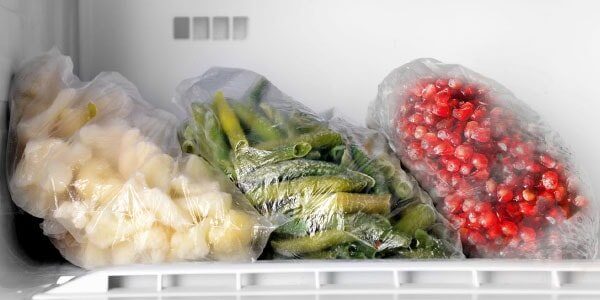
For storage in the freezer, fruits are suitable for which problems with the skin begin. Peel and put into bags. In the freezer, the shelf life of pomegranates is up to 1 year.
Clay sheathed
If you have problems with the refrigerator, there is no freezer, or you simply overtook some difficulties with storing the pomegranate, then do not worry, there is an option to keep the fruit at home - in a clay shell.
For this method, white clay, previously calcined in the oven, is perfect. Dilute the clay with water to the consistency of sour cream and gently dip each fruit in it. After the first layer has dried, repeat the procedure.
Attention, the pomegranate must be covered with clay, including the crown! After the second layer has completely dried, put the fruits in a box and put them on the balcony or closet. Products will be stored in this form for up to six months, but on the condition that all fruits are whole, without damage to the peel
The products will be stored in this form for up to six months, but on the condition that all the fruits are whole, without damaging the peel.
Crown formation
A pomegranate tree will be beautiful only if its crown is formed.
Pruning is carried out before the start of active growth of the crop (approximately in February). One of the trunks, after a while, is replaced by a young stem. Therefore, the main purpose of pruning is to stimulate branching. The "new" organs are sheared to the outer kidney. As a result, only a few pairs of leaves remain on the branch. Pruning shoots can make excellent cuttings.
The crown of the tree can be shaped to your liking. It is easy to give it an oval or spherical shape.
Can a bonsai tree be made from pomegranates? Easy! Indoor pomegranate is great for practicing the art of bonsai. It is easy to give the required shape to the bush by means of repeated pruning. You can shape the crown to your taste.
You can trim whatever you want. After all, in the spring the tree will fully renew itself. It is worth removing dried flowers, branches and other organs from the bush.

